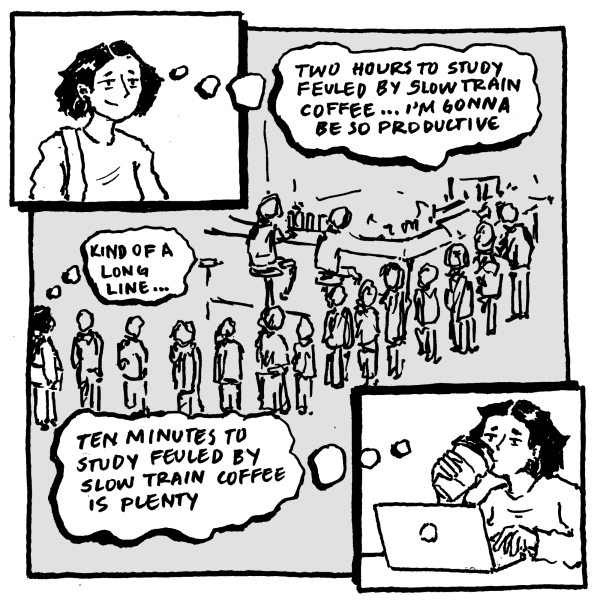The Tricks to Making Ramen Even More Delicious
We need to rethink the way we treat our ramen.
I know it’s cheap — $1.75 per pack on Amazon and in stores — and oftentimes it comes with a plastic bowl. It’s also seemingly easy to make: You boil the water, drop in the noodle patty, then the flavor packet. I grew up eating ramen as one of my favorite foods, and I think it could taste much better if we put more consideration into how we cook it.
I know it sounds ridiculous — you just pour water into a bowl, what’s the point of changing anything? How could there be a difference in taste? Well, even pouring water has science behind it, and can make a huge difference in taste. More importantly, ramen reflects the way Americans tend to treat their food: They don’t take enough care in the process.
If you don’t treat your food with care, the most expensive ingredients will become a cheap dish. But if you care about your food, a $1.75 package of ramen can taste like $17.50. Caring for your food means analyzing the features of each ingredient — color, texture, and flavor. You think about the whole dish, and then how each ingredient can work like a symphony to create a wonderful meal. Something fatty needs to go with something sour; something dry needs something wet. How many times have you had a dry falafel that literally takes cups of water to swallow? That happens because people don’t analyze each ingredient. Chickpeas are dry, so other ingredients need to compensate for the dryness — for example, you could add some very creamy sauce on the top.
Considering the same symphony and balance of each ingredient could also be applied to even the cheapest foods, like ramen. And I want to show you that even boiling water could make ramen taste different. This is what you need to know to cook a perfect bowl of ramen.
The first step is buying the right brand. At DeCafé or Ben Franklin, there is one brand that you should totally avoid: Simply Asia. It’s not Simply Asia, it’s Barely Asia. I don’t know how this evil business has been running years, because its ramen is a complete abuse of the name. After trying it, my friend called it “disgusting.”
The brand you should look for is either a Japanese brand called Maruchan or a Korean brand called Nongshim. My personal favorite is Nongshim, and you can buy it from DeCafé or Kim’s. Nongshim’s ramen noodle is thicker and chewier than Maruchan’s, and the flavor also has more of an umami taste.
These ramen packages have pictures of a ramen bowl with slices of pork, an egg, and sliced scallions on top. Of course, that is definitely not what you are going to get. But, again, as long as you treat it with care, the result will not leave you disappointed.
Think about how tender you want your noodle to be. Just like you cook your pasta to al dente, you want your noodle to be chewy, so don’t boil it for too long. If the recommended cooking time is seven minutes, consider cooking it for only five minutes, and the residual heat will cook the ramen noodle to perfect al dente.
And now it’s time to think about how strong you want the flavor to be. My personal experience — I average two bags of ramen per week — has taught me that if you pour the whole flavor packet in, you’ll get a very salty noodle soup. So just use two-thirds or half of it.
Another factor that will influence the flavor is the amount of water you use. Look carefully at the instruction — adding too much water will make the ramen noodle watery and flavorless. Many people boil a random amount of water to cook ramen, but here’s the important part: You need much less water than you think your ramen needs. You really only need to boil about 500ml to 550ml of water.
My final reminder is to stir your noodles occasionally to prevent them from sticking to each other. You can totally enjoy the bowl of ramen now! For bonus points, you can add other stuff to the soup. Ramen lacks nutrition, so when my mom cooked me ramen when I was young, she always added some spinach and other veggies. Then she would add a perfectly soft-boiled egg that has a slightly runny yolk.
Caring for your food requires minimum effort to make a huge difference. Packaged ramen can become luxurious as long as you think through the cooking process. We need to change our attitude towards food. In a documentary on Netflix called Salt, Fat, Acid, Heat, food writer and chef Samin Nosrat traveled around the world to explore how mastering the four elements of cooking — salt, fat, acid, and heat — can make every dish taste good. That’s what is absent in America right now: a caring for each ingredient, and a respect for cooking.
Bon appétit.



